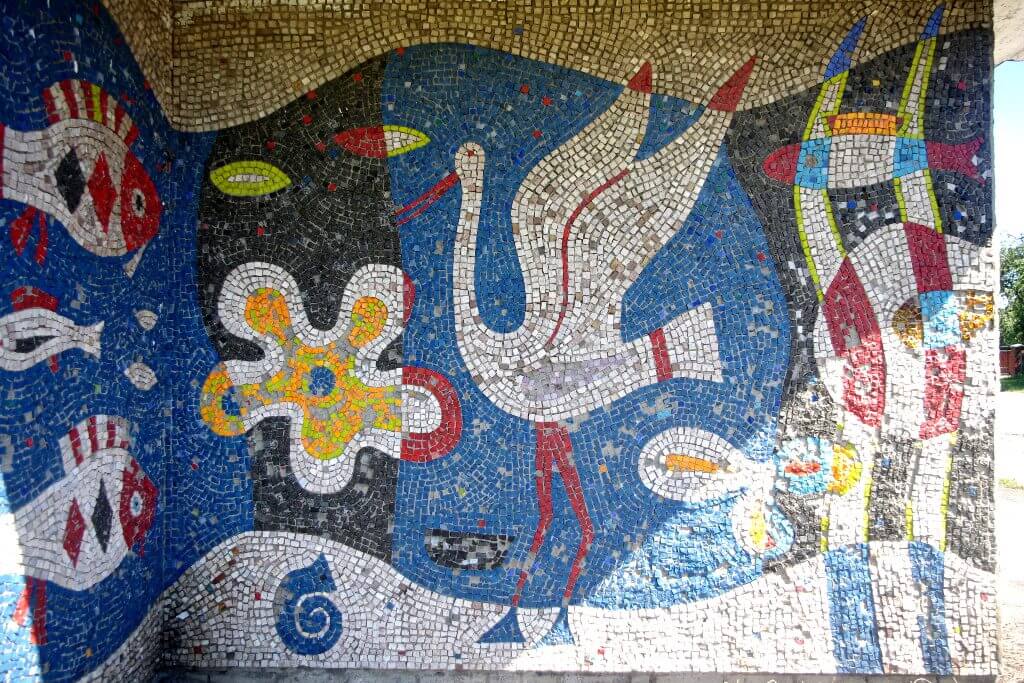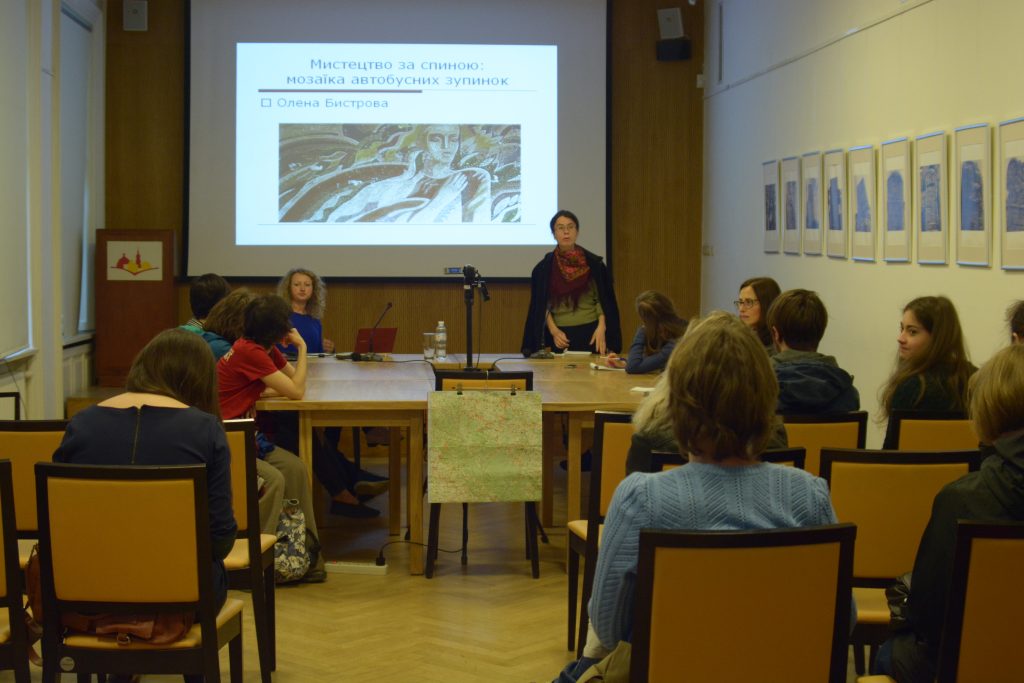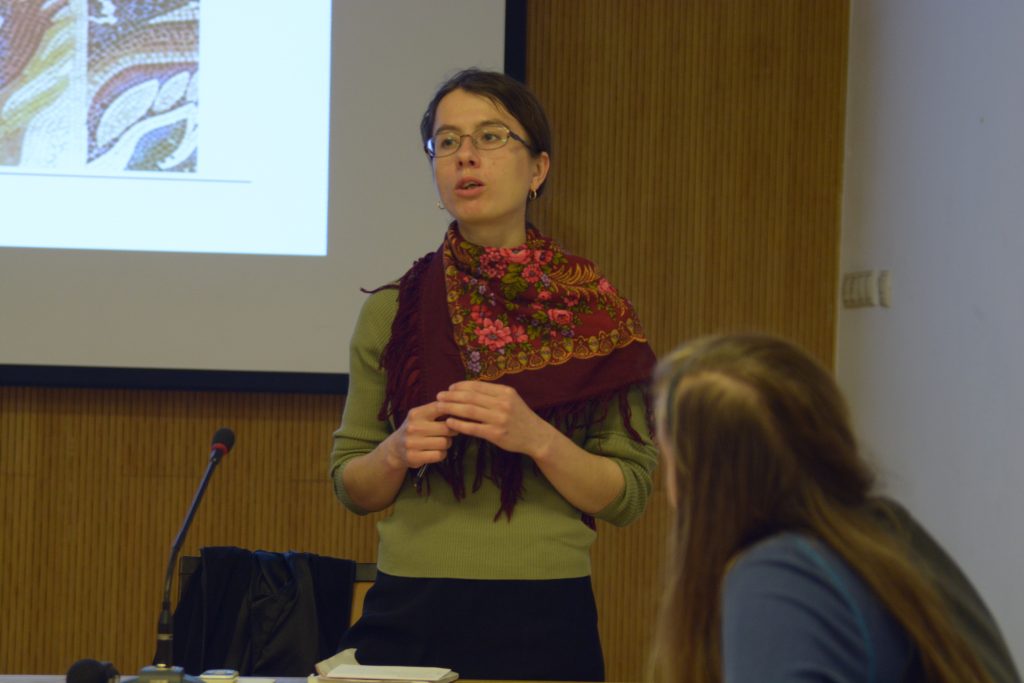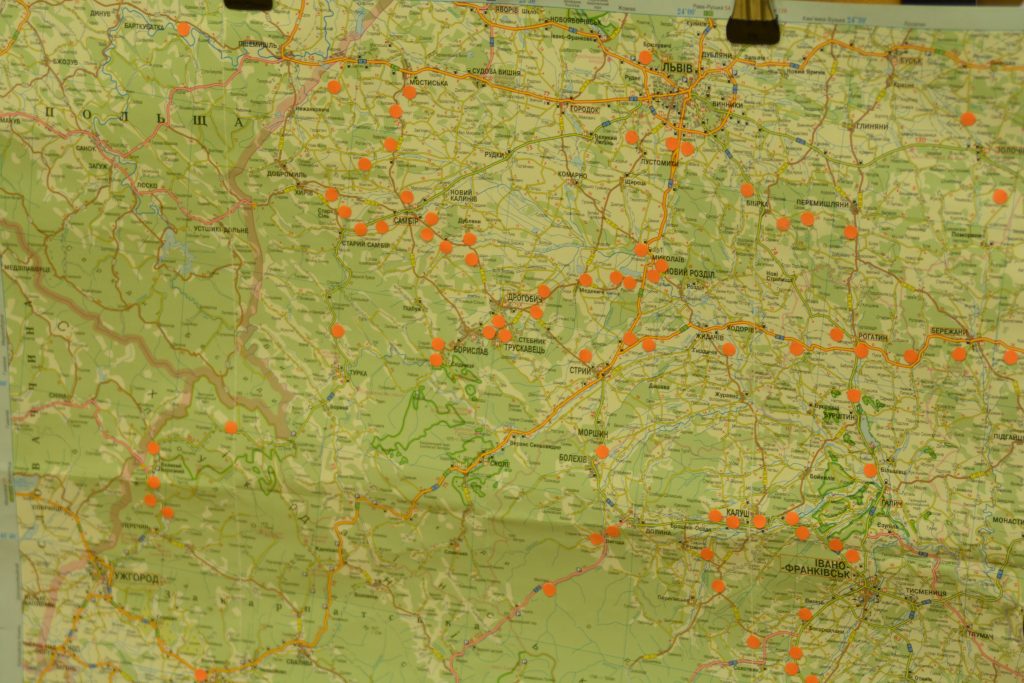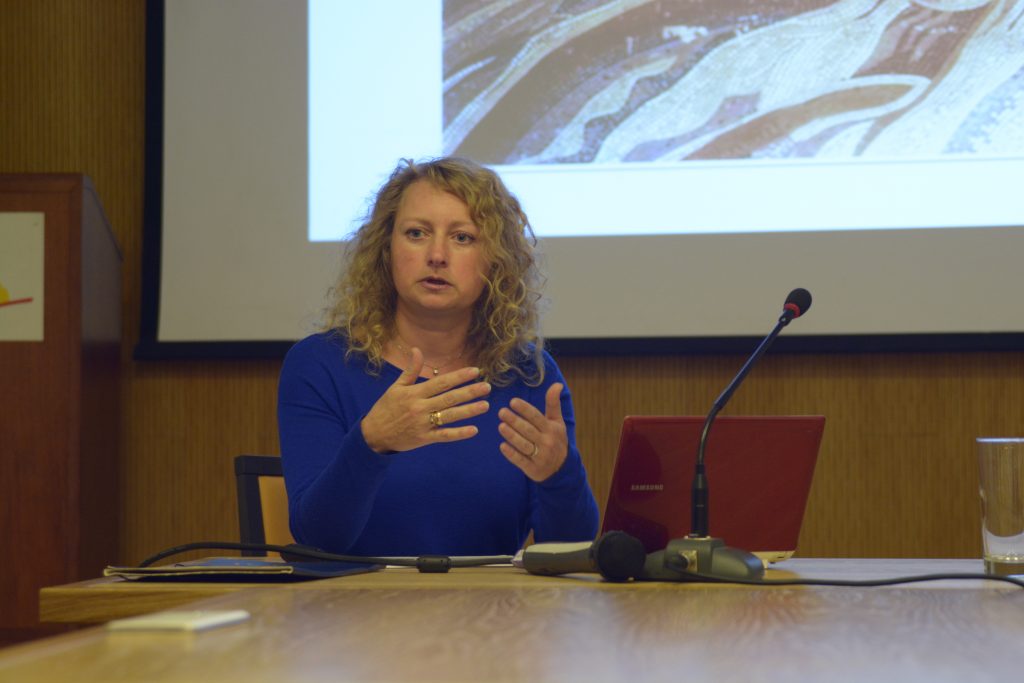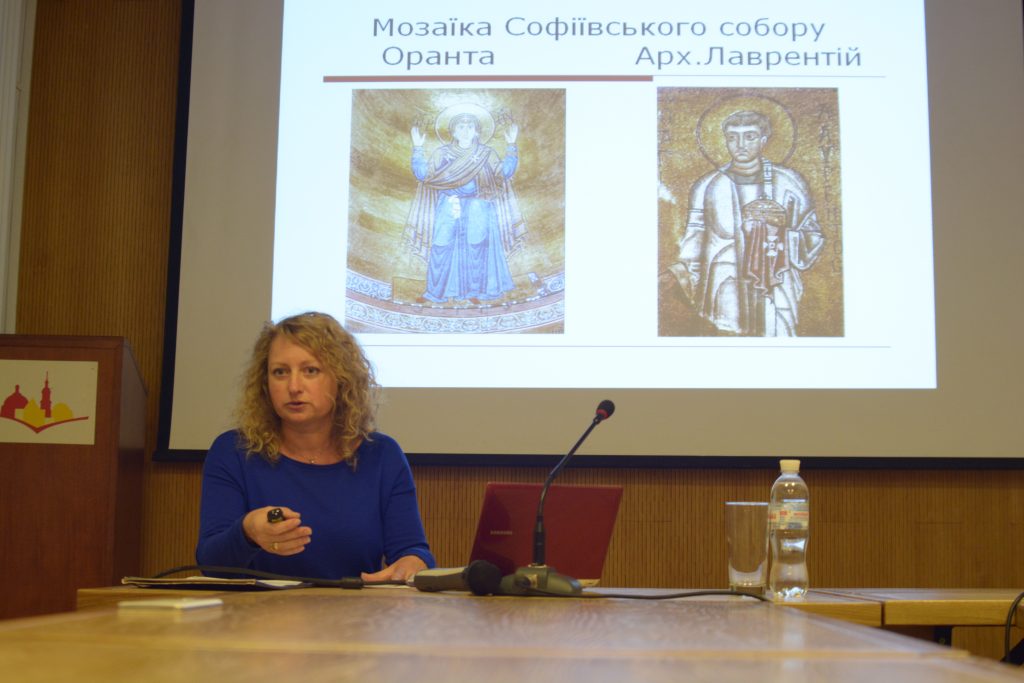Turn Around! Art Behind Your Back: the Mosaic of Bus Stops
May 17, 2016
Center for Urban History, Lviv
The art of outdoor mosaic started actively developing the 1960s. The active development of cities led to the development of commuter and intercity bus service. Bus stops were to exert an aesthetic and ideological influence on the population. Due to sustainable financing, mosaic images were designed and implemented at bus stops and on the external facades of urban architecture during 33 years of the USSR's existence. The mosaics of bus stops are a unique artistic phenomenon that enabled artists to express creativity within a system that was controlled by ideological censorship. This was a unique type of Soviet Street art. This was fully manifested in mosaics associated with bus stops in the western regions of Ukraine. On this territory, there was nearly an absence of communist symbolism; instead concepts, symbols and themes associated with the local culture were clearly displayed.
The dominant feature is ornamentation that recreates the tradition of embroidery, wood carving, and locally designed pysanky from the Lviv, Ternopil and Ivano-Frankivsk regions. A wide range of plant ornaments, made in different styles: baroque, realist, and modernist. Very interesting are the mosaics with images of Galician inhabitants in festive and everyday clothing. An analysis of bus stops compared with the unique features of the area in which they are located, make it possible to conclude that artists considered the specifics of the region when creating the murals. This lecture was an attempt to draw the community's attention to the problem of maintaining this art form, which is not widely practiced today.

Olena Bystrova
Doctor of Philology, Professor at the Ivan Franko State Pedagogical University of Drohobych. Her research interests include: the theory of literature, the theory of photography, and art history.
Credits
Сover Image: Olena Bystrova
